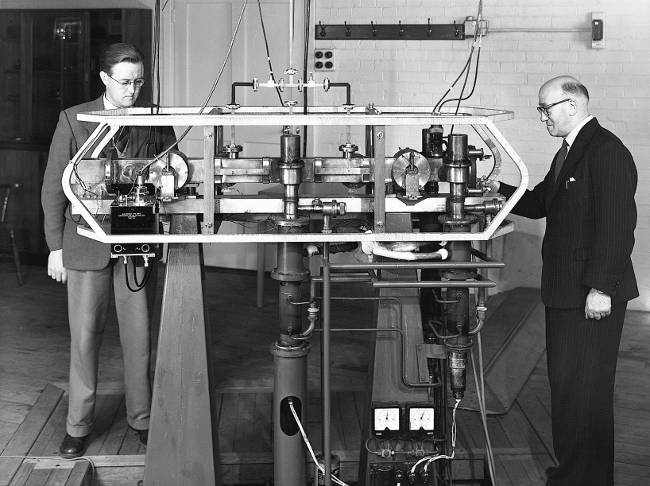This article is more than 1 year old
Glorious silicon globes could hold key to elusive PERFECT kilogram
El Reg drills into why we need an ultra-accurate mass
Let's not go the way of the leap second, eh?
Take the method of cleaning the cylinder using alcohol, ether and steam: "We've tried not to change the cleaning process from what's been done historically in case that has some unforeseen change," Davis said. And yet the mass might have changed.
Then there's the security, details of which he refused to divulge.
"We have security arrangements - but we don't go into them," he said. These do, however, include restricted access to the artefact: just the president of the international committee of weights and measures and a representative of the French government can be present when the mass is removed from its glass jars.
"This is one major reason to replace the definition based on a constant of nature," he said.

The Earth still relies on astronomical seconds instead of atomic seconds, defined by Louise Essen (R) and Jack Parry at NPL
The focus on Planck's constant is an attempt to replace the voodoo with something scientific - something that's rational, logical and constant.
"Assuming we have a new definition, if the watt balances agree with each other, then we will work out how to maintain the unit of mass and disseminate it to the public and to the national labs," Davis said.
The goal for this week's meeting is to decide the next steps in telling the world how to build the perfect kilogram, should the results be accepted. Davis hopes a draft resolution will be approved that can be taken to wider consultation; Robinson's view is that more watt balances should be built to calibrate the perfect "electric kilograms".
Judging by history, though, a standard backed by quantum mechanics is not guaranteed global adaption just because it's more logical than a lump of alloy worshipped in Paris.
A CIPM meeting in 1967 changed centuries of our approach to time and accepted a new definition for the second that was not based on the rotation of the Earth.
That definition is based on the movement of an atom of caesium-133: one second is the time it takes for 9,192,631,770 transitions between two particular states. It's implemented today using atomic clocks - the first was built at NPL in 1947.
The atom's movement is constant; the Earth's rotation is not - it's slowing down. That mean that clocks must occasionally be adjusted to compensate. Today we have a global time standard called International Atomic Time (IAT) that is set using a network of 300 atomic clocks.
The world, however, remains on Universal Coordinated Time (UTC), set by the rotation of the Earth. UTC is used in servers, network devices, aircraft - almost everything. But because the Earth's rotation is slowing, a leap second must be added to UTC every few years to keep it on track with TIA, specifically within 0.9 of an atomic second.
That leap second has a habit of tripping up unprepared Linux servers - as Australian carrier Qantas discovered this year when a leap second was added to UTC and the Linux servers running the Amadeus-based reservation system Qantas relies upon were not updated. It caused a massive malfunction hours into a new day this year causing reservation and check-in chaos for a short period of time at Qantas. The leap second is considered such a serious problem, that space missions do not take off on the day that leap seconds are added.
Yet we do not let go of UTC. A similar unwillingness to relinquish the mechanical past of the kilogram could mean that the metal lump in Paris gets the last laugh over the men and women working on the SI kilogram standard. It's something BIPM wants to avoid not just for all the uncertainties associated with the current mass but also because the kilogram affects other SI standards.
The kilogram as a function involving Planck's constant is tricky to explain, and that could pose a problem in encouraging its wider adoption given the atomic second is relatively easy to grasp yet shunned. "Understanding Planck's constant is a very difficult concept," Davis said.
"There's something very appealing to say we have a lump of metal. But because of the interconnectness of physics, and the impact it has on other fields - it should be replaced as soon as possible."
The lump of metal in Paris, it seems, will enjoy its steam baths for the foreseeable future.
Bootnote
Join Ian Robinson and other Reg readers for a Live Chat on November 23 at 2pm GMT, 9am Eastern, 6am Pacific. He'll update us on the BIPM meeting and talk more about his work and the challenges of defining the electric kilogram. ®
